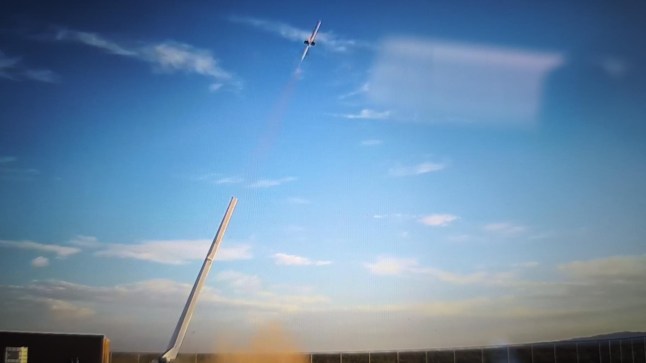Mexico: the US It's Time for You to Write Off Water Debts
 2021-07-20
2021-07-20
As regards water distribution in international rivers, geographical and political factors often give rise to water disputes. As a result, “water debt” is an effective means to the medication of water disputes.
Among many “water-debt-ridden” countries, Mexico, a weak and arid country, is a case in point. It owes the US 432 million cubic meters of water a year, and worse still, because of a prolonged drought that has left it desperately short of water in recent years, its water debts continue to increase with no signs of decrease. Now, how to pay off the water debts to the US each year has become a major social and diplomatic challenge for the Mexican government.
Current Situation Of The Border Rivers Between The US And Mexico
The Colorado River and the Rio Grande River are two important rivers in the vast southern basin of North America. For the US and Mexico, these two great rivers are not only the geographical boundaries of their vast border but also the lifeblood of their ecological balance and economic development. They are small in terms of drainage and discharge compared with those of the giant Mississippi River, but they are huge rivers for Mexico.
However, both southwestern US and northern Mexico are extremely arid areas due to geographical and climatic factors. These two great rivers are mainly fed by the Rocky Mountains in the north, while the vast areas downstream are highly dependent on the two rivers for irrigation. As an important agricultural region, the Colorado River Delta provides water for a large number of farmlands there. If Mexico is not accessible to enough water, not only will its farms not be able to produce food, but tens of millions of people in northern cities will not be able to have access to drinking water.
According to the US survey, the Colorado River ranks sixth globally in terms of water scarcity, and the middle and lower reaches of the Rio Grande River are also facing a grave water crisis. Years of drought and lack of rain have led to a series of clashes over water resources along the border between the two countries.
The Colorado River, once roaring, is now shallow, with dams and irrigation pumping water away bit by bit.

Selfish “Colorado River Compact”Of The US
At the beginning of the 20th century, seven southern states of the US were the first to engage in a protracted internal struggle on their behalf to extract more water from the great river, Colorado. From then on, upstream and downstream states began to wag battles for water.
In November 1922, to solve the disputes, representatives of seven states took the lead in reaching a consensus on the water division of the Colorado River and signed the historic “Colorado River Compact” according to the actual needs of the states at that time and the future development needs after 15 days of 17 rounds of marathon negotiations under the auspices of the federal government.
“Colorado River Compact”, however, took into account only the US’s domestic water needs and completely ignored guarantees for the amount of water that Mexico was entitled to downstream. Moreover, there was still no equitable solution to water distribution in the lower reaches of the Rio Grande River, where the two countries meet.
A Treaty In 1944
In terms of International Law Theory, the US does not own the Colorado River and the Rio Grande River entirely, so the US must negotiate with Mexico to redistribute the water resources in all international rivers shared by the two countries. Mexico lies down the river and is in constant protest for water. However, only after settling the allocation of water resources to seven states did the US address the Mexican government’s claims for water. Under endless protests from Mexico, the US and Mexico began formal negotiations on water distribution along the border in 1930.
Since the US is at the upper reaches of the two rivers, the initiative in the negotiations has always been in the hands of the US. And for the US, no matter how it negotiated with Mexico, it would end up reducing the amount of water allotted to its seven states. Even if the federal government had agreed, the states that had managed to reach an internal compromise would not have agreed, so the US displayed little incentive in negotiations.
The US, with little goodwill to negotiate, started with the idea of a final allocation of 925 million cubic meters of water from the Colorado River, Mexico's largest annual irrigation in history. But Mexico knew that it was choking off its agricultural potential. For the sake of its future, Mexico should get 5.551 billion cubic meters of water per year.
The US overcharged, and Mexico haggled. There existed a gaping gap between the bottom line of both sides so that they still have not reached a consensus.
The stagnant negotiations, however, have not affected the development of the rivers in the US. Whiling negotiating, the US began planning nearly 10dams on the Colorado River, including the Hoover Dam and the Glen Valley Dam. By 1935, with the completion and operation of the Hoover Dam, the discharge and cycle of the Colorado River had changed significantly, and the Mexican government downstream finally realized how serious the situation was.

After repeated diplomatic meetings and protests, the US and Mexico finally resumed negotiations on water distribution in 1941. However, the previous negotiations were dominated by the US, and now that the US had built so many water projects that it was more dominant in negotiations. After arduous negotiations, on February 3, 1944, in the midst of World War II, “Treaty Between The US And Mexico Concerning The Use Of Water Of The Colorado River, The Tijuana River And The Rio Grande River (The Rio Bravo River) From Fort Quitman, Texas To The Gulf Of Mexico” was concluded.
Representatives of the US and Mexico signed the treaty in Washington.

Under the treaty, the US and Mexico issued a final ruling on water distribution of the Colorado River and the Rio Grande river. That is, of all the water in the Colorado River, whatever the source of water, the US needs to share only 1.85 billion cubic meters (10% of the Colorado River’s average annual volume) with Mexico. Even though the Colorado River has plenty of water, it carries 2,096 billion cubic meters to Mexico at most.
Moreover, in the event of a severe drought or a serious accident in the irrigation system in the US, it would have the right to reduce its discharge to Mexico in proportion to its loss of water, and Mexico cannot demand extra water for any reason.
As part of a package of treaties signed at the same time, the treaty also provided for water-sharing between the US and Mexico’s neighbors, so that Mexico was not only unable to block the Rio Grande River from flowing to the US but was obliged to provide the US with 432 million cubic meters of water per year through its six downstream tributaries.
Mexico did not have complete control of the basin of the Rio Grande River, which serves as the border river between the US and Mexico, but it still had to sign up for it.
Mexico Takes 80 Years To Pay Off Its Debts
Studies have shown that the water distribution treaty between the US and Mexico, signed in 1944, did not meet Mexico’s normal water needs.
It does indeed seem to be. The Colorado River and the Rio Grande Rivers in Mexico have not been as robust as they used to be since the 1944 water distribution treaty. The once fertile and ecologically rich agricultural areas of northern Mexico are now on the verge of extinction because of water shortage.
The Colorado River, in particular, is now not only unable to meet the needs of residents but also has lost the power to flow into the sea since 1998. Whereas the US has been oblivious to this ecological disaster.
Between 1992 and 2003, severe droughts reduced the Colorado River’s discharge to less than 700m cubic meters (less than 40% of Mexico’s water distribution), leaving Mexico’s reservoirs holding only 25% of their capacity. Forced by the dire situation, Mexico began to default on its water debts, and in 2005 it owed the US 1.85 billion cubic meters of water.
The drought had exerted an even greater impact on the lower reaches of the country. Mexico’s share of water had fallen sharply, but its debts had not been reduced. As defaults mounted, the US had stepped up pressure on the Mexican government and made the water debts an obligatory public topic of discussion when the two leaders meet.
Under pressure from the US, the two countries reached an agreement in 2005 under which Mexico promised to pay off its water debts. According to Reuters, at a news conference, Mexican foreign ministry representatives repeatedly responded to a US inquiry:” We are willing and always have been willing to implement all the provisions of the treaty.”
Mexico is in a dilemma of guaranteeing the country’s normal water usage with its current water, and it is saddled with huge debts. In 2011, Mexico’s worst drought in 70 years wiped out 2.2m acres of crops and 1.7m livestock, while the US did not reduce Mexico’s water debts.
Officially, 15 of Mexico’s 32 states are now classified as “extremely short of water”, but their water debts to the US still need to be paid. In Mexico’s case, a five-year cycle is at best a moratorium on water debts, which must eventually be paid off in the next five years.
Under the agreement, Mexico must pay the US about 378 million cubic meters of water debts by October 26, 2020. If it does not, the retaliatory measures of the US--closing the border or imposing new tariffs--must be too much for Mexico to afford.
The economy of northern Mexico is too dependent on the US, and in the face of a powerful and outrageous US, it has to compromise or give in.
Rebellious Mexico
The Mexican government planned to pump a massive amount of water into the US before the deadline to pay off its water debts, which would affect the lives of many Mexican farmers in the region and further escalate a protracted water war in the arid land.

Farmers on Mexico’s northern border were reported to have staged a protest near the Bochia Dam, which pumps water to the US. Firebombs, rocks, and other weapons were employed in fierce confrontations with security forces before they managed to seize the dam and close the sluice gates.

However, during the protests, two residents were killed in clashes with Mexican security forces. The incident not only affected the planned water repayment process but also put the military and civilian relations in northern Mexico in a tense situation.
“Poor Mexico, too far from God and too close to the US,” said former Mexican President Jorge Luis Diaz.
In the face of severe water shortage and the draconian water distribution treaty in 1944, the Mexican government’s priority is to pay off its water debts. After all, failing to return the water on time will do far more to annoy the US than to annoy its farmers.





